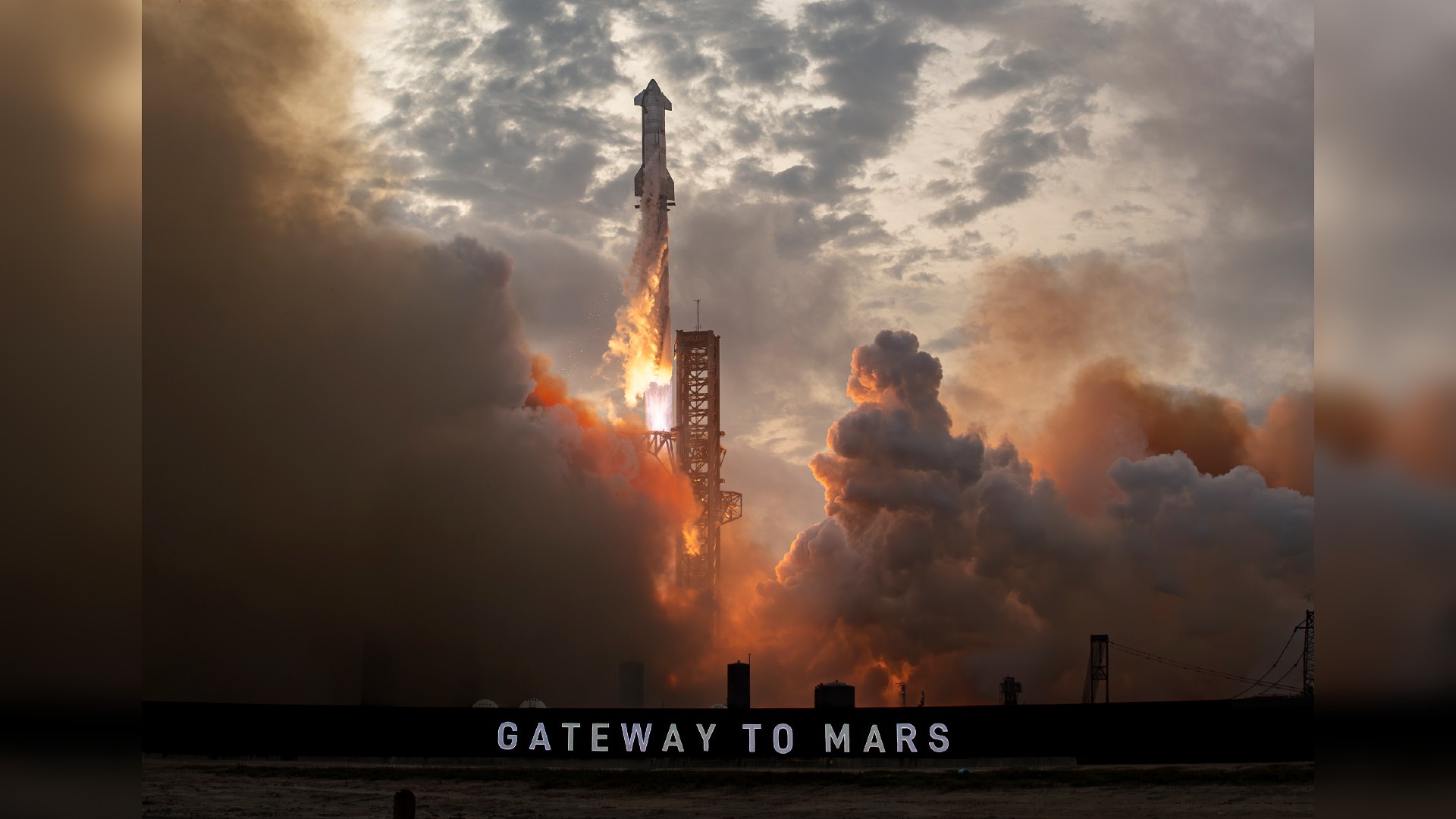
We might not have to wait too long to see the world's most powerful rocket take to the skies again.
That vehicle, SpaceX's 400-foot-tall (122-meter-tall) Starship, conducted its third test flight last Thursday (March 14) from the company's Starbase launch site in South Texas. Starship notched a number of important milestones on that mission, but both of its stages ended up breaking apart while descending through Earth's atmosphere.
SpaceX is still analyzing data from the flight. The results will inform preparations for Starship's fourth flight, which could be just around the corner at this point.
"We'll figure out what happened on both stages" during descent "and get back to flight, hopefully in about six weeks," SpaceX President and Chief Operating Officer Gwynne Shotwell said at the Satellite 2024 conference in Washington on Tuesday (March 19).
Such a timeline would place liftoff "at the beginning part of May," she added. (Technical readiness isn't the only issue, however; SpaceX will still need to secure a launch license from the U.S. Federal Aviation Administration, which is overseeing an investigation into what happened on the March 14 flight.)
Related: Relive SpaceX Starship's 3rd flight test in breathtaking photos
Shotwell hailed Flight 3 as "incredibly successful."
Get the Space.com Newsletter
Breaking space news, the latest updates on rocket launches, skywatching events and more!
The ascent phase for both of Starship's elements — its huge first-stage Super Heavy booster and 165-foot-tall (50 m) upper-stage called Ship — was "beautiful," she added.
Super Heavy also conducted a boostback burn as planned, setting itself up for splashdown in the Gulf of Mexico. The booster failed to execute its landing burn, however, and broke apart about 1,650 feet (500 m) above the water
Ship reached orbital velocity and was on course to hit its splashdown target in the Indian Ocean. But it too experienced a "rapid unscheduled disassembly" (RUD, a SpaceX term of art), giving up the ghost about 50 minutes after liftoff.
That latter number is a useful shorthand for the successes achieved on Flight 3. The first two Starship test missions, which launched in April and November of last year, lasted just four minutes and eight minutes, respectively. And both of those flights ended in RUDs as well.
Starship Die Cast Rocket Model Now $69.99 on Amazon.
If you can't see SpaceX's Starship in person, you can score a model of your own. Standing at 13.77 inches (35 cm), this is a 1:375 ratio of SpaceX's Starship as a desktop model. The materials here are alloy steel and it weighs just 225g.
Note: Stock is low so you'll have to act quickly to get this.
SpaceX has very big plans for Starship, viewing the fully reusable vehicle as the breakthrough humanity needs to make settling the moon and Mars economically feasible.
And, down the line, company founder and CEO Elon Musk sees Starship going even farther afield. He recently said that a "much larger and more advanced" version of the rocket will eventually launch on interstellar missions.
Many more test flights will be needed to get Starship on the road toward its planned ambitious future — and Flight 4 likely won't aim to make any big leaps over its predecessors, Shotwell said.
"I don't think we're going to deploy satellites on the next flight," she said at the conference. "Things are still in trade, but I think we're really going to focus on getting reentry right and making sure we can land these things where we want to land them, successfully."
Join our Space Forums to keep talking space on the latest missions, night sky and more! And if you have a news tip, correction or comment, let us know at: community@space.com.

Michael Wall is a Senior Space Writer with Space.com and joined the team in 2010. He primarily covers exoplanets, spaceflight and military space, but has been known to dabble in the space art beat. His book about the search for alien life, "Out There," was published on Nov. 13, 2018. Before becoming a science writer, Michael worked as a herpetologist and wildlife biologist. He has a Ph.D. in evolutionary biology from the University of Sydney, Australia, a bachelor's degree from the University of Arizona, and a graduate certificate in science writing from the University of California, Santa Cruz. To find out what his latest project is, you can follow Michael on Twitter.
-
Cdr. Shepard But should it?Reply
According to space.com staff, SpaceX is a menace to be opposed. Think of what Starship could maybe possibly theoretically do to the ozone layer, potentially, based on conjecture and zero understanding?
SpaceX bad, everyone else good.









